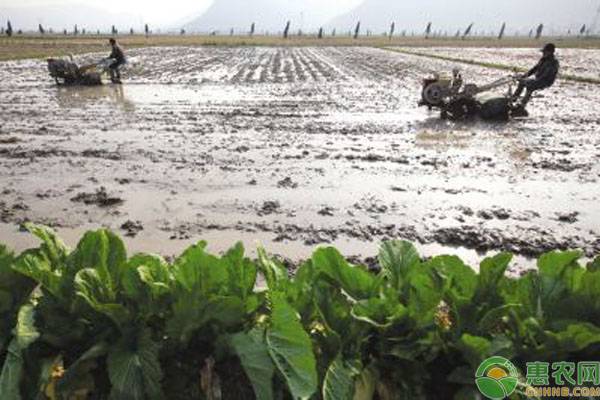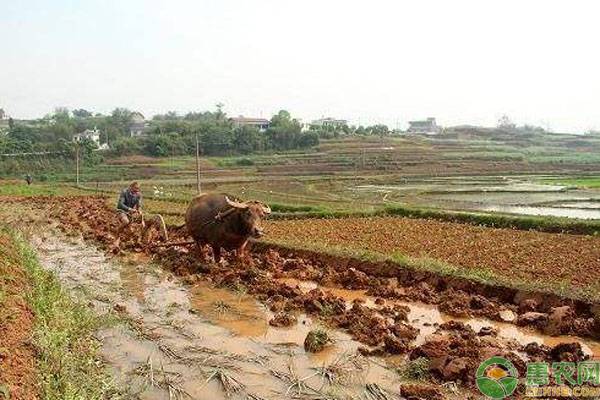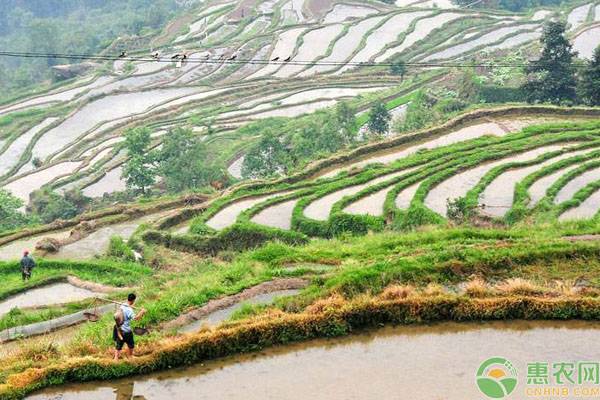How can I increase rice yield during the spring ploughing period? (with management points)
The Spring Festival has passed, and the rice farmers will face the spring ploughing. Although rice prices have been sluggish in recent years, the species still has to be planted. Whether it is self-retained or high-quality rice, it is crucial to improve quality and increase yield. . Let me introduce the management points of spring ploughing. 1. Reduce the effects of herbicide residues Due to the large amount of weeds and strong resistance, the use of herbicides in rice fields will destroy the soil structure and affect the use of herbicides. It is generally recommended to plant Chinese milk vetch or rapeseed because it can be used as a green manure to reduce pesticide residues and soil heavy metal pollution. In addition to planting rapeseed and Chinese milk vetch, the method of reducing herbicide residues in the soil is also to use methods such as deep tumbling, soaking and leeches to minimize the impact on rice growth. 2, spring ploughing fine land preparation In the land preparation work for spring ploughing, the following points should be paid attention to: Firstly, deep ploughing and irrigating of the soil in the field will make the distribution of nutrients in the upper and lower layers of the soil uniform, and reduce the probability of occurrence of pests and diseases. In particular, in recent years, the damage of the mites has become serious, and the deep ploughing of sputum is the key agricultural measure to control the mites. Secondly, leveling the paddy fields makes the paddy field uniform and uniform, avoiding the occurrence of large-scale potholes, which is not only conducive to rice irrigation, but also beneficial to later water fertilization and weeding. Finally, it is necessary to make the soil finer and avoid the appearance of large-sized soil, which will be beneficial to the full combination of soil and fertilizer, and has important significance for the normal growth of roots and the normal acquisition of rice nutrients during rice planting. 3. Choose excellent rice seeds and do seed treatment We can decide the varieties to be planted this year based on the price of rice in early 2018 combined with the cultivation of the land. First of all, in the process of selecting seeds, we should actively focus on the dominant varieties and focus on the selection of varieties with strong resistance to pests and diseases. For some rice varieties cultivated all the year round, because their resistance can hardly meet the planting requirements, they should be carefully selected to avoid the effects of repeated varieties on rice yield, especially for self-retained species used for many years. After the selection of the variety is completed, the seed treatment should be done well, and the key technical aspects such as sun-breeding, seed selection, soaking, germination, and germination should be strictly controlled to ensure that the buds are buddy and bud, and lay a good foundation for cultivating the sturdy and sturdy. Pay specific attention to two aspects: First, the seeds are properly aired, usually for one day on a sunny day. Second, the seeds are sterilized. This operation is mainly to remove a small amount of pathogens carried by the seeds themselves, and to ensure the normal germination and healthy growth of the plants after sowing. At present, the widely used disinfection method is to soak the seeds in 25% prochloraz cream for 1-2 days, then wash them, and then immerse them in 85% strong chlorine for about 1 day, then wash them again. This method can remove the seeds. A variety of pathogens carried in. It is also possible to use a seed coating agent, and the use of the coated seed can be carried out without germination and direct seeding. 4. Reasonable rice breeding The breeding work is an important part of the work that affects rice cultivation. First of all, the field that is more suitable for breeding should be selected. It should have the following characteristics: the soil is fertile, the light is sufficient, and the water source is close. At the same time, the soil should be properly treated before seedling, and the farmyard manure and fertilizer can be mixed according to a certain ratio to make the soil slightly acidic. Secondly, the rice fields will be ploughed and squashed, and the ditch will be used as a hoe to apply the base fertilizer to level the glutinous surface. Finally, early spring breeding is easy to encounter low temperature or even rainy days, if not properly managed, it can cause weak seedlings, and the bacteria are easy to invade and cause rice rotten. In case of low temperature, deep water can be used to protect seedlings; in case of continuous rainy days, water should be drained early, and the water layer should be flexibly controlled to enhance ventilation, which is conducive to rooting and seedling protection. As long as farmers use plant protection techniques reasonably in spring ploughing, they can solve many problems in rice planting. Do you have any good suggestions for rice planting? For the wonderful pictures and popular comments on rice planting, you may be interested in the following recommended contents. Welcome to read.
Black tea (dark tea) is named after the black appearance of the finished tea. It is one of the six major tea groups and is a post-fermented tea. The main production areas are Guangxi, Sichuan, Yunnan, Hubei, Hunan, Shaanxi and Anhui. The traditional black tea is made from high maturity black wool tea, which is the main raw material for pressing tightly pressed tea.
The yellow powder in black tea is commonly known as golden flower, a beneficial microorganism, the so-called golden flower, is in the processing of raw materials through the flowering of this special procedure, specifically in the black tea bricks to cultivate a kind of coronary aspergillus substance called coronary scattered cystic bacteria, commonly known as the golden flower, observed under the microscope, each individual golden flower is umbrella-shaped clusters, the whole body is golden and eye-catching, ringed into a group, evenly distributed.
Yunnan black tea powder ; Hubei black brick tea powder;Pu'er tea power Shaanxi Zhongyi Kangjian Biotechnology Co.,Ltd , https://www.zyplantextract.com


The process of making black tea generally includes four steps: killing, kneading, stacking and drying. Black tea is mainly classified as Hunan black tea (Fu tea, Qianliang tea, black brick tea, Tri-tip, etc.), Hubei green brick tea, Sichuan Tibetan tea (border tea), Anhui Gu Yi black tea (An tea), Yunnan black tea (Pu'er tea), Guangxi Liubao tea and Shaanxi black tea (Fu tea) according to geographical distribution.
